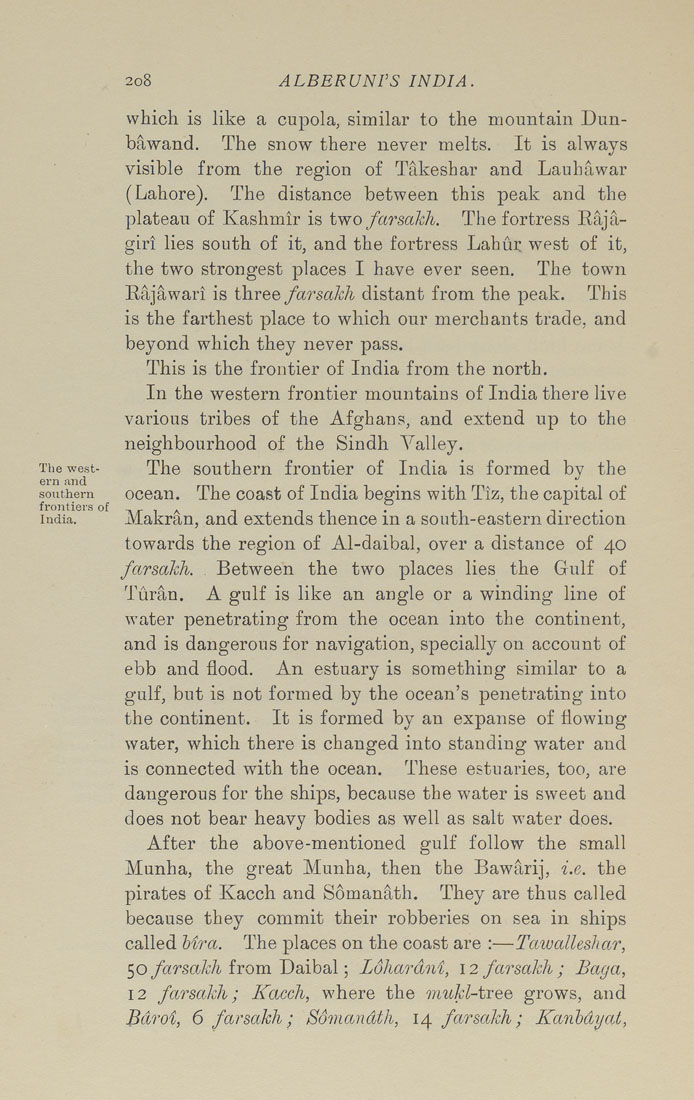Bīrūnī, Muḥammad ibn Aḥmad, Alberuni's India (v. 1)
(London : Kegan Paul, Trench, Trübner & Co., 1910.)
|
||
|
|
|
|
| Page 208 |

208 ALBERUNPS INDIA. The west¬ ern and southern frontiers of India. which is like a cupola, similar to the mountain Dun- bawand. The snow there never melts. It is always visible from the region of Takeshar and Lauhawar (Lahore). The distance between this peak and the plateau of Kashmir is two farsakh. The fortress Raja- giri lies south of it, and the fortress Lahur west of it, the two strongest places I have ever seen. The town Rajawari is three farsakh distant from the peak. This is the farthest place to which our merchants trade, and beyond which they never pass. This is the frontier of India from the north. In the western frontier mountains of India there live various tribes of the Afghans, and extend up to the neighbourhood of the Sindh Valley, The southern frontier of India is formed by the ocean. The coast of India begins with Tiz, the capital of Makran, and extends thence in a south-eastern direction towards the region of Al-daibal, over a distance of 40 farsakh. Between the two places lies the Gulf of Turan. A gulf is like an angle or a winding line of water penetrating from the ocean into the continent, and is dangerous for navigation, specially on account of ebb and flood. An estuary is something similar to a gulf, but is not formed by the ocean's penetrating into the continent. It is formed by an expanse of flowing water, which there is changed into standing water and is connected with the ocean. These estuaries, too, are dangerous for the ships, because the water is sweet and does not bear heavy bodies as well as salt water does. After the above-mentioned gulf follow the small Munha, the great Munha, then the Bawarij, i.e. the pirates of Kacch and Somanath. They are thus called because they commit their robberies on sea in ships called hira. The places on the coast are :—Tawalleshar, 50/arso-M from Daibal; Lohardni, 12 farsakh; Baga, 12 farsctkh; Kacch, where the mukl-tree grows, and Bdroi, 6 farsakh; Somandth, 14 farsakh; Kanhdyat, |
| Page 208 |







